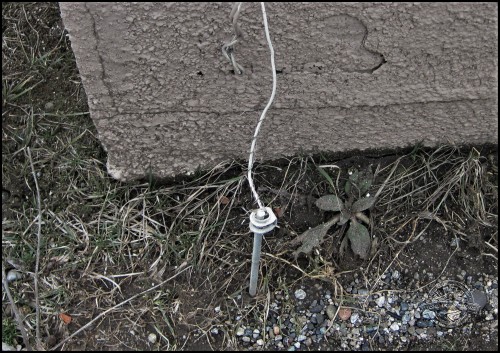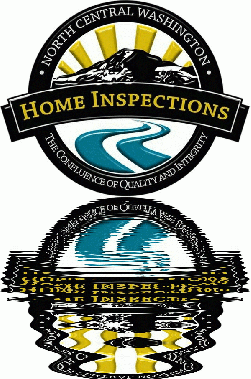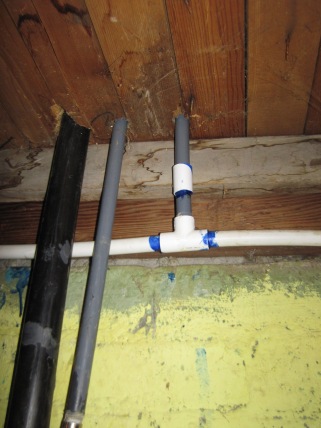Wenatchee Home and Pest inspector- Do you really need a pest inspection?
As a Wenatchee Home and Pest Inspector I calculate that I see insects and/or damage from wood destroying insects in about 10 to 15% of the homes I inspect. That is one out of 10 or less! I have informal information from another local inspector that seems to confirm this information.
Termites-
Termites feed upon any materials that contain cellulose such as wood. Many species of termites cannot digest cellulose to extract the sugar content. They rely on protozoa in their gut to do that job. This is mutually beneficial association with the microorganisms in their digestive tracts that convert cellulose into simple substances that termites can digest.
In nature, termites are very beneficial insects. They return dead trees and wood debris to the soil as nutrients. Termites help convert dead wood and other materials containing cellulose into humus. Unfortunately, termites cannot tell the difference between wood in your home and wood in a dead tree in the forest. Termites are considered to be pests when they attack homes. Subterranean termites are one of the most potentially damaging insect pests for homes and structures in the country.
Entomologists have identified about 2,200 species of termites for the entire world; however, only 70 of these species infest structures and require control. There are 13 species of termites in the continental United States that require treatment of some extent.
Subterranean Termite–
Subterranean termites are native, soil-inhabiting insects that feed on wood, paper and similar cellulose containing materials. They primarily nest underground. They excavate an extensive network of galleries or tunnels in the soil that allow them to travel far distances to locate food. Subterranean termites readily transport soil and water to aboveground sites. Soil provides the environment needed for high moisture requirements of subterranean termites. In order for these soft-bodied insects to keep from drying out, they must be surrounded by relatively high humidity not only when they are in the soil, but also when they are foraging above ground


Subterranean termites are social insects that live in colonies. The social exchange of food (called trophallaxis) and mutual grooming are very important aspects of colony life. Termite colonies are comprised of various types of individuals (or castes) that have distinct physical and behavioral characteristics. The proportion of each caste is regulated by environmental factors and caste-regulating chemicals (pheromones) produced by the termites themselves.
These castes include workers, soldiers, and reproductives (queen, king). Each caste has different duties in the colony. The winged primary reproductive adult (swarmer, alate, flying termite) is the form most home owners often see. These reproductives or swarmer termites are about 3/8 of an inch long.

In nature, termites start new colonies by the process of swarming. A “swarm” is a group of winged male and female reproductives (swarmers, alates) that leave the colony in an attempt to pair and initiate new colonies. Swarming occurs in mature colonies that typically contain at least several thousand termites. They usually emerge on warm sunny days (usually when temperatures are at least 64°F) after a rain as early as March or April but usually in late April to early May.
The worker caste makes up the bulk of the colony and is directly responsible for damage to wood. Workers are the first termites seen when a shelter tube or piece of wood is examined. Termite workers are physically and sexually immature males and females. These wingless, white insects are blind. They resemble little grains of white rice.

Workers are rarely seen unless infested wood is examined or the mud tubes are broken open. Because of their thin skin, workers will dry up and die within three to six hours if exposed to the drying conditions outside the nests.
Wenatchee area is considered an area of moderate risk for Termites!

The U.S. Forest Service has identified 15 conditions that frequently lead to termite infestations:
1. Cracks in concrete foundations and open voids in concrete foundations are hidden avenues of entry.
2. Any wooden posts or supports set in concrete may be in contact with the soil underneath.
3. Concrete porches with earth fill may provide wood-to-soil contact.
4. Form boards left in place contribute to the termite food supply.
5. Leaking pipes and dripping faucets in the crawl space keep the soil under the structure moist.
6. Blocking crawl space vents with shrubbery will cause the air under the structure to remain damp and warm.
7. Construction debris in the backfill beside the structure will contribute to the termites’ food supply.
8. Low foundation walls and footings will provide wood-to-soil contact.
9. Stucco or brick veneer carried down over the concrete foundation allows for hidden access to the structure.
10. Soil-filled planters built up against the side of the structure allow direct access into foundation cracks.
11. Forms left in slabs, where plumbing drains enter the structure, provide access.
12. Wooden porch steps in contact with the soil are entry points.
13. Heating units in crawl spaces maintain warm soil temperatures for termite colonies year-round.
14. Paper is a wood product. Paper collars around pipes and ducts also provide access to the structure.
15. Wooden fences, trellises and other wooden adornments up against the side of the structure may provide access.

Estimates of damage caused by subterranean termites have been calculated by Dr. Mike Haverty, 1976 Southern Forest Experiment Station – USDA, Gulfport, MS, and are indicated below:
Estimates of wood consumption are by a theoretical colony of eastern subterranean termites:
1) Wood consumption rate (mg wood/gram of termite/day) = 33.2
2) Weight of worker (mg) = 2.5
3) Wood consumption/termite/day (mg) = 0.083
4) Estimated number of workers/colony = 60,000
5) Wood consumption/colony/day (gm [grams]) =
4.98
6) Days to consume one board foot of pine (where pine weighs an average of 0.5 gm/cc with 2359.7 cc/board foot or 1179.9 gm/board foot) = 236 days.
In other words, an average, mature colony of eastern subterranean termites would contain about 60,000 workers. Under ideal conditions, such a colony would consume about 5 grams of wood each day. This is less than 1/5 of an ounce of wood. At this rate it would take this colony about 157 days to totally consume a one-foot length of a pine 2×4.
Wenatchee Home and Pest inspector- Do you really need a pest inspection?
This may the largest purchase you ever make in your life why would you not get a pest inspection.
NCW Home Inspections, LLC is based in Wenatchee Washington serving Chelan County, Douglas County, Okanogan County and Grant County Washington.
NCW Home Inspections LLC-509-670-9572


























